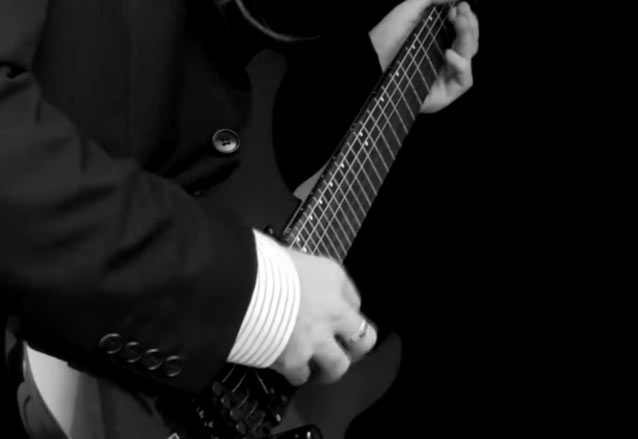The Vital Ingredient for Killer Hand Synchronization
Learn how to overcome hurdles and improve your timing.

One thing that gets in the way of developing hand synchronization—without us even realizing it—is bad timing, especially in terms of the fretting hand.
It might sound obvious, but there are some other hidden factors impacting your timing abilities.
Let’s say you’re working on triplets with the fretting hand only. You’ve taken one of the common three-note-per-string shapes and decided to drill some reps. It might look something like EXAMPLE 1.
All the notes should be of the same length and occur in the right place, for a count of 1-2-3, 1-2-3 and so on. However, what often happens is the errant fingers have a mind of their own and decide to rush through the notes, throwing the pace completely off.

You might end up with something like EXAMPLE2, which is essentially two 16th notes followed by an elongated 8th note at the end. By itself, as an intended effect, there’s nothing wrong with that result, but if you’re intention was triplets, there’s clearly a lack of control going on.
And just imagine if you tried to synchronize that with a picking hand that actually could play triplets just fine. You’d constantly be fighting against yourself without realizing why it’s not getting any better. In these cases, it’s good practice to check that your fretting hand is playing the correct note values before you add the other factor of the picking hand.

But let’s say you’ve done the checks and your fretting hand isn’t playing ball. Why does this happen?
All the latest guitar news, interviews, lessons, reviews, deals and more, direct to your inbox!
In truth, it’s just a lack of finger strength. A weak finger can’t hold itself in a certain position for that long without wanting to relieve itself of the task. The most common way of doing this is to quickly shift the burden onto another finger, thereby rushing through the notes prematurely. It’s analogous to somebody rushing through an exercise because they lack the strength to hold the positions for the required amount of time to get the correct form.
The only way to develop this finger strength is to play more—but to play more with the correct timings. Forcing yourself to hold notes for the proper duration will not only build up the resilience in your fingers but will gradually cure you of the tendency to rush through patterns.
So there you have it. Finger strength leads to control, and control leads to good timing. Good timing is essential to developing good hand synchronization. If you include all of those factors in your practice, you’ll start breaking through those invisible barriers.
Ben Higgins started playing guitar at age 10. He’s released five solo albums and continues to teach guitarists from around the world. In 2012, he released the YouTube video “30 Shredders in One Solo,” in which he emulated the style of 30 of the world’s greatest guitarists. He followed it up with “30 Misplaced Shredders” and “Another 30 Shredders." In 2016, Ben developed his “Badass…” online courses, which are aimed at improving people’s technique in picking, sweeping and hand synchronization. To find out more about Ben and his courses, visit benhigginsofficial.com.
